Hegel H400 Streaming Integrated Amplifier Review
I had barely processed my impressions of the phenomenal H600, with its new dual-mono design and impressive digital section, before the younger sibling Hegel H400 – also dual-mono – arrived. Expectations are high since I called its predecessor, the H390, the best buy in its class.
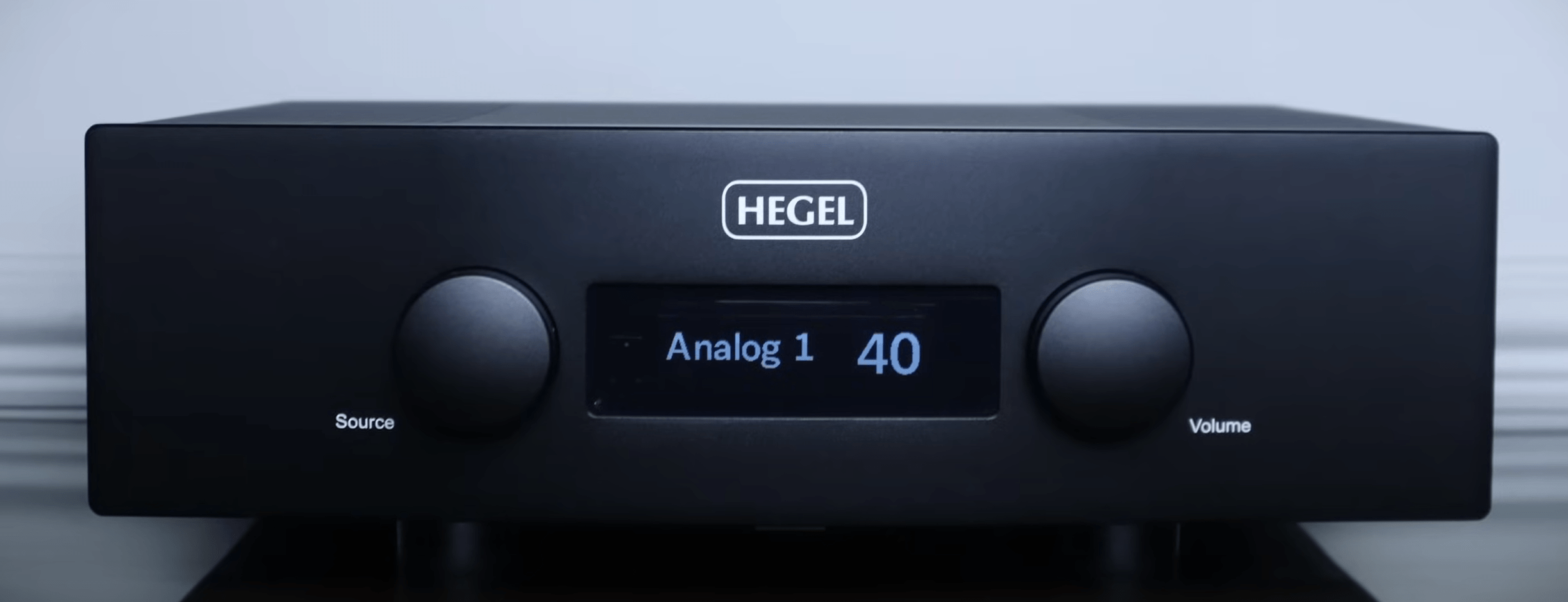
So, it’s with excitement and anticipation that I unpack the H400. Has Hegel outdone itself again, or is this just an excuse to raise the price by 20 percent?
DESIGN UPGRADE
The design changes compared to the H390 are most noticeable on the lid. The previous model had sharper edges on top, while the H400 is more rounded towards the sides. This is because the lid is now in one piece and curved downwards, fastened with screws on the sides.
The lid has two wide rows of ventilation openings, now with oval holes instead of the long slits of its predecessor. The central ventilation section from the H390 is gone, as Hegel claims the H400 generates less internal heat.
Another important change is that the chassis is made of aluminum instead of steel, which Hegel claims can improve sound due to reduced vibrations.
On the front, most things look the same, but the knobs for volume and source selection feel firmer and offer a better tactile experience. These are the same as on the more expensive H600 and can be pressed to access menus, reducing the need to reach for the remote control.

APP CONTROL
With the H400, Hegel has done something they previously said they would never do: release an app! It’s called Hegel Control (during the testing period, it was called Hegel Setup). The app is free to download and available for both iOS and Android. It just needs to be on the same network as the amplifier, then you can control playback, volume, and settings from your phone. This is an important step towards a more modern user interface.
The app also replaces the web-based interface previously used for making settings changes. But don’t expect the app to stream your music. It has built-in radio and podcasts via a service called Airable, but that’s it. However, the amplifier can stream anything you want outside of the app.
NEW STREAMING PLATFORM
The most important change in the amplifier is inside. While the motherboard is largely the same as before, with dual mono amplifier sections and solutions borrowed from more expensive models, there have been some major changes on the digital front.
The H400 features an entirely new streaming platform. The old one wasn’t very flexible, and adding new features was challenging. It had Spotify Connect, and after over a year of hesitation, it finally became Roon Ready. But it required quite a bit of tweaking, and Tidal Connect was never an option. That’s changed now, as the H400 has both Spotify Connect and Tidal Connect.
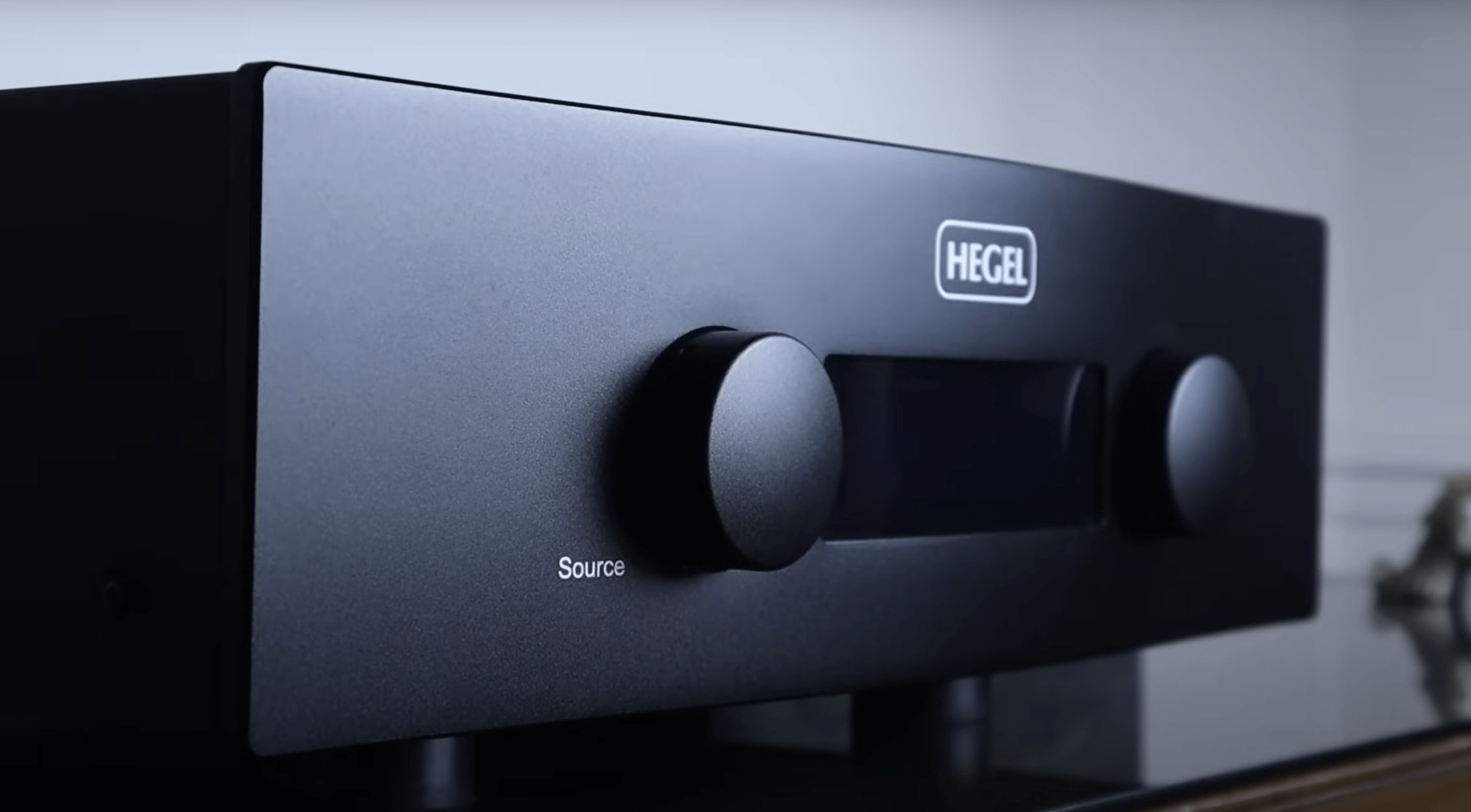
For the first time in a Hegel product, we also get Google Cast (Chromecast) built-in! This is a feature I’ve personally been requesting for years, ever since Google Nest speakers introduced us to voice-controlled smart homes. Hegel has finally caught up, and the reason for “why now?” is that the feature no longer requires Bluetooth connectivity. Hegel draws the line at Bluetooth, as they believe it introduces too much noise into the signal.
Hegel says the new platform makes it much easier to expand functionality, so we can expect more services in the future.
BETTER DIGITAL CONVERSION
Digital conversion has been improved in the H400. Hegel says their engineers have learned a lot from working on the H600 and applied that knowledge to develop a new DAC for the H400.
The new chipset is an ESS 9038Q2M, which Hegel claims provides higher resolution and smoother musicality compared to the AK4490 chipset in the H390. Part of the reason for the switch from AKM to ESS was likely due to necessity, following the catastrophic AKM factory fire a few years ago, which forced Hegel and many others to design circuits based on competing DAC chips.
Another area that’s been significantly improved is the ability to play high-resolution files. The Hegel H390 handled up to 24 bit/192 kHz, but the H400 goes all the way up to 32 bit/384 kHz. While the selection of such files is small right now, it’s smart to be future-proof.
The new digital section also has improved MQA support, though this feels less relevant now that Tidal, the only streaming service using the format, has officially discontinued it.
INSTALLATION AND USE
Setting up the H400 is surprisingly easy. Connect it to the network with an Ethernet cable, and it will automatically appear in the Hegel Control app. The app gives you full control over volume, inputs, and settings. Controlling internet radio and podcasts from an unfamiliar service is a nice bonus, though it’s not something I personally use.
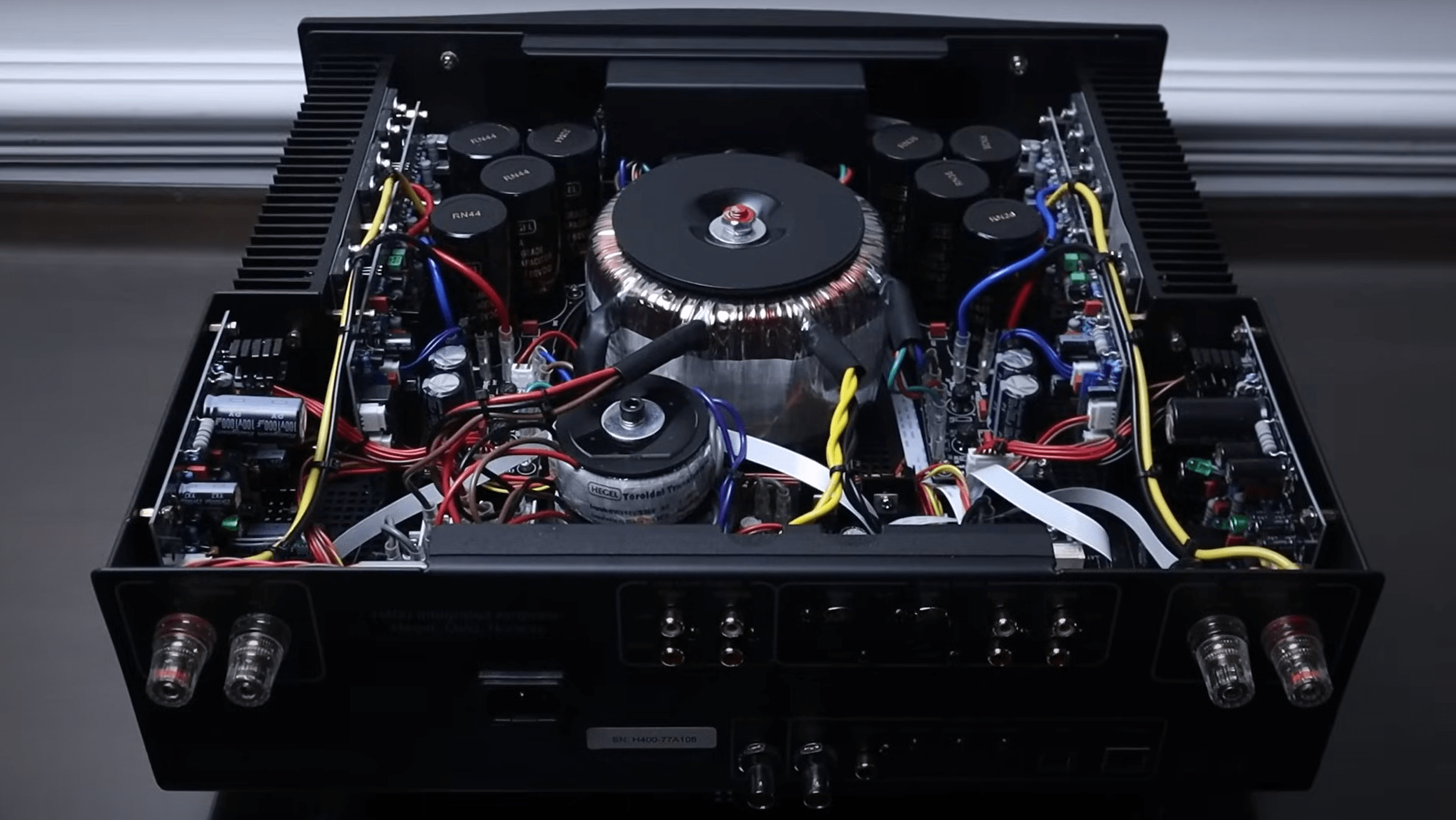
However, the integration of Chromecast is really cool. It’s not just simple, but there’s no compromise on sound quality either. Combined with support for Roon, Spotify Connect, Tidal Connect, and AirPlay 2, the H400 is an all-rounder when it comes to streaming. We’ll see what updates come in the future.
SPARKLING SOUND
On paper, there’s no doubt that the Hegel H400 is a better amplifier than its predecessor. But how does it perform in practice?
From the aggressive corner, I play Sky Father by the stoner/doom band Bismarck on my vintage JBL 4411 speakers, each with a hefty 12-inch woofer. It’s loud, punchy, and powerful enough to splash my morning coffee onto the walls. The guitars are well separated, forming a wall of distorted sound. The drums have plenty of space but are a bit recessed in the mix. The growling vocals create a wonderfully dark and aggressive atmosphere – a great way to start the day!
A brighter mood is set by the bass rhythms in Lizzo’s disco hit About Damn Time. It hits hard and drives the rhythm into the listener’s body. It’s well-defined and never harsh, just enough to make you want to grab a cocktail and start a party.
With the floor-standing Axxess L3 speakers, the soundstage becomes more refined. Broadway artist Melissa Errico sounds brilliant in the light jazz song Opening Doors/What More Do I Need. The piano has plenty of punch, all the way down to the lowest notes on the left-hand keys. These speakers shine in the midrange and above, and it’s nice to see the amplifier excelling here as well. Just listen to Melissa’s confident, dynamic vocals in the center, while the brushed drums shimmer at the top!
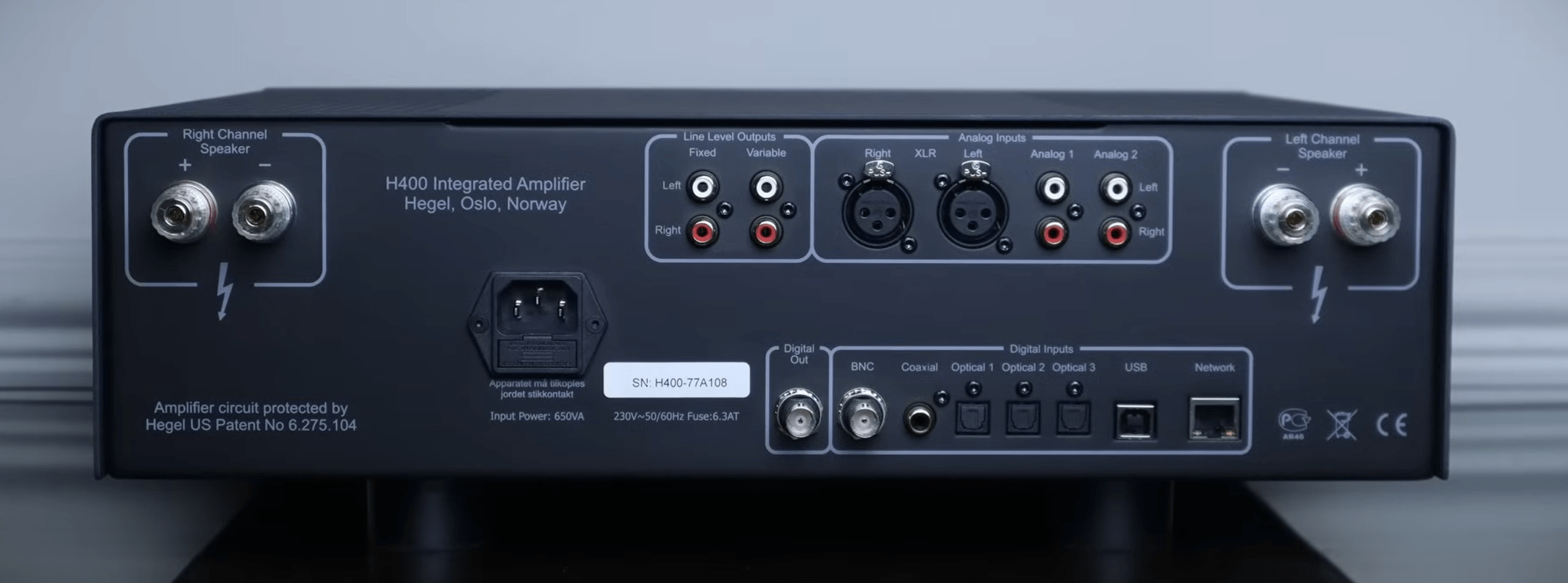
Specifications
- Type: Integrated amplifier
- Technology: Class AB with SoundEngine 2
- Wireless: AirPlay 2, Google Cast, DLNA
- Services: Spotify Connect, Tidal Connect, Roon Ready
- Analog connections: 1 balanced (XLR) and 2 unbalanced (RCA) inputs, 2 unbalanced outputs (RCA, variable and fixed)
- Phono input: No
- Radio: No
- Headphone jack: No
- DAC: ESS 9038Q2M 32 bit/384 kHz PCM, DSD (USB)
- DAC connections: 3 optical, 2 coaxial (1 BNC), USB-B, Ethernet
- Power: 2 x 250 watts at 8 ohms
- Frequency response: 5–180,000 Hz
- Dynamic range: No data
- THD: 0.005% at 50 watts/8 ohms/1 kHz
- Signal-to-noise ratio: > 100 dB
- Other: Remote control, app control, MQA decoding
- Dimensions/weight: 15 x 43 x 44 cm / 20 kg
- Website: hegel.com
Verdict
Hegel H400 introduction
In this video we present the Hegel H400 streaming amplifier, going through its main features. We also talk about comparisons to ...
The New and Improved Integrated Amplifier from Hegel: The H400
We met up with our friend, Anders at Hegel, where he introduced up to the highly anticipated Hegel H400 integrated amplifier at ...



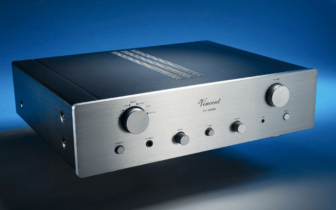
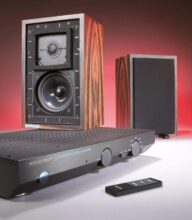
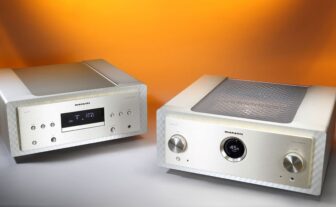
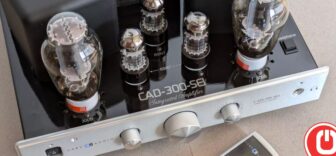
What is the conclusio0n after this test ?
Thanks for the review, but I miss a sound quality comparison with the H390 and other amplifiers, there is no context.
Cheers,
Perry